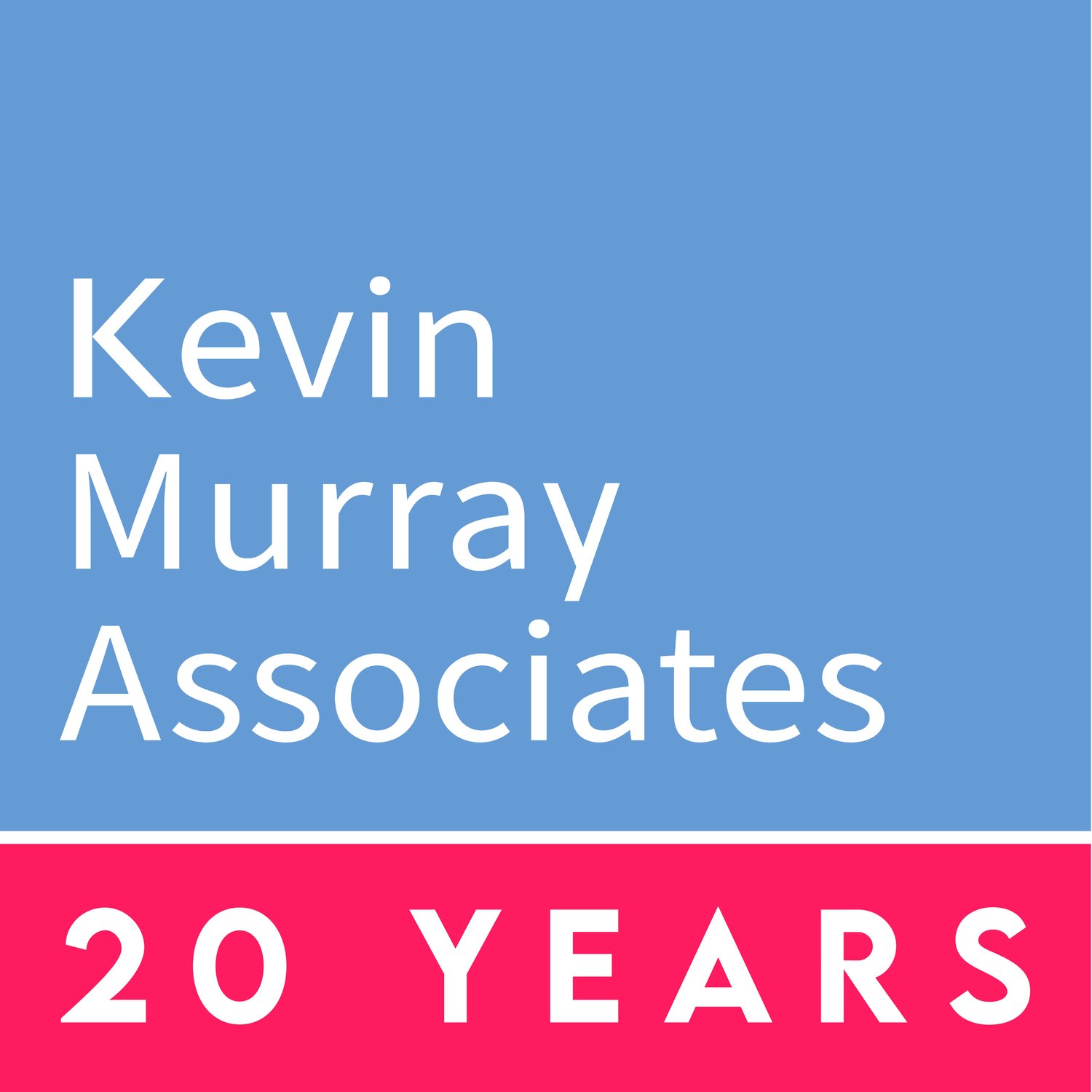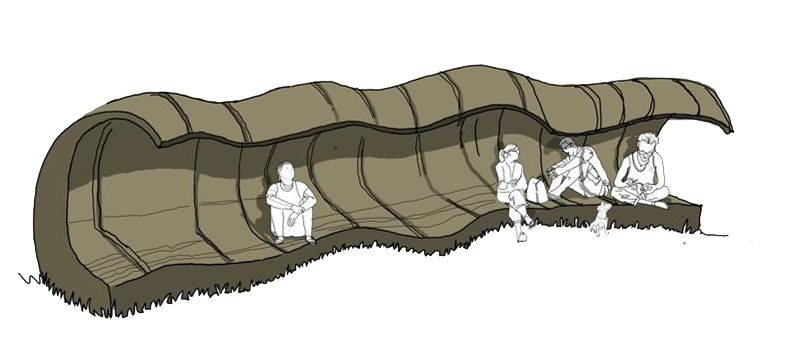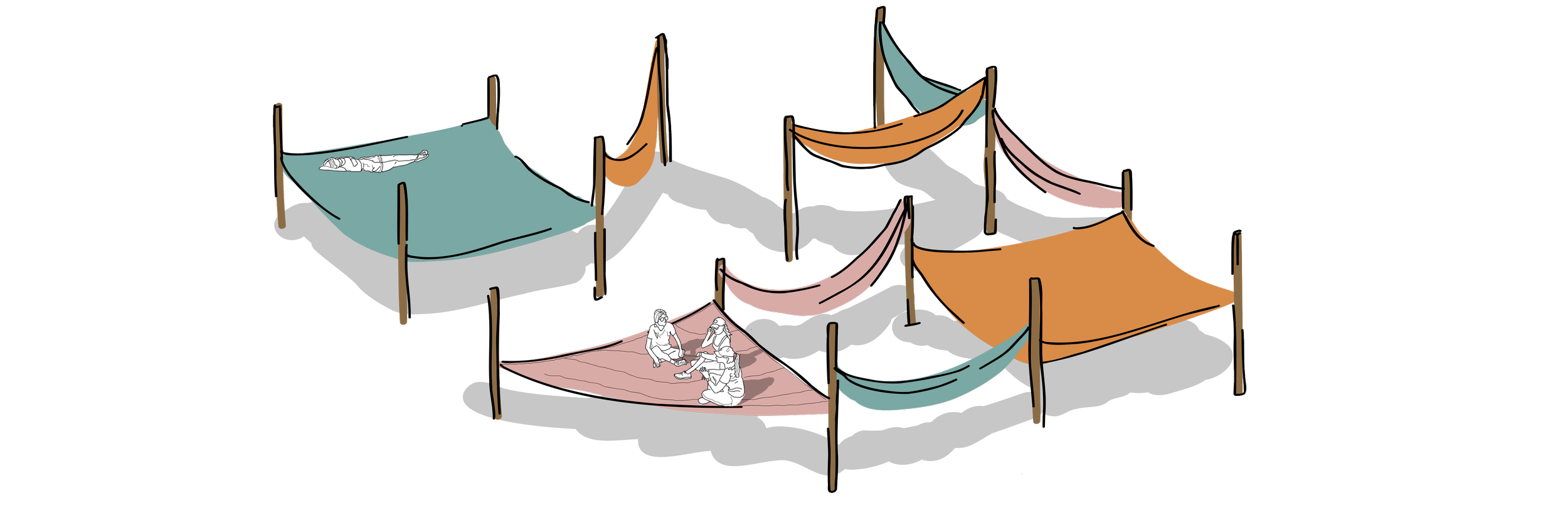The Fraserburgh Beach Vision & Masterplan: what does it say about community co-design?
The final report for the Fraserburgh Beach Vision & Masterplan has now been published by Aberdeenshire Council, following endorsement by the Banff and Buchan Area Committee. The concluding document sets out the four-stage engagement process, the masterplan and design with corresponding illustrations, and an action and delivery plan. KMA want to sincerely thank Aberdeenshire Council and the more than 1,500 community members, stakeholders, and children and young people who participated in the consultation over the past year. It was a privilege to work with them all.
This process has been one of truly engaging and open co-design, which has been crucial to securing the final outputs of the project. The final masterplan and illustrations, created by the team of KMA, RTU and WMUD, have been heavily informed and guided by community input across four stages of consultation. Our engagement with both Aberdeenshire Council and Fraserburgh Community Council, local businesses and residents, politicians and landowners, primary and secondary schools, colleges and local organisations, has shown how effective a creative co-design process can be in ensuring that community ideas and experiences are integrated into plans, informing both broad ambitions and detailed designs.
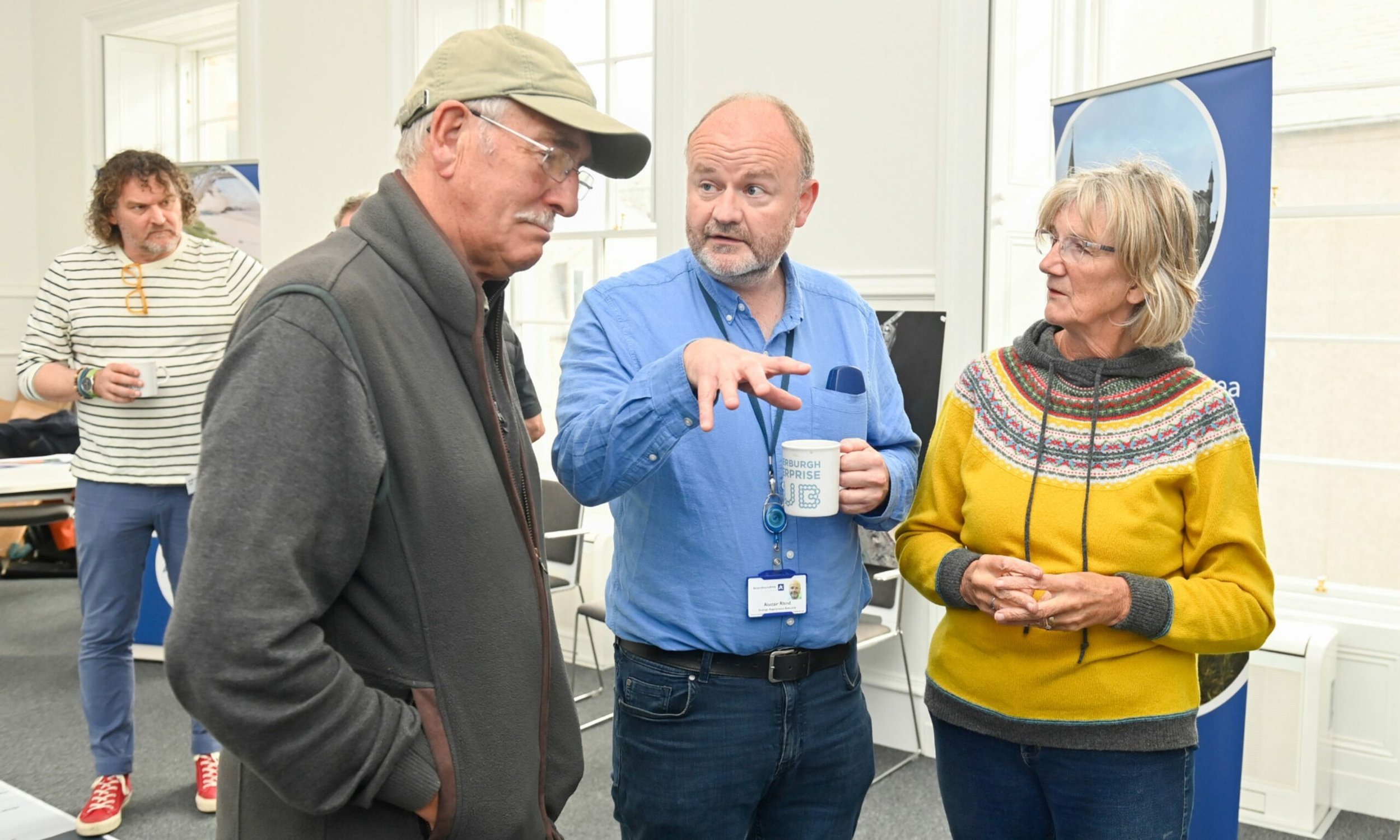
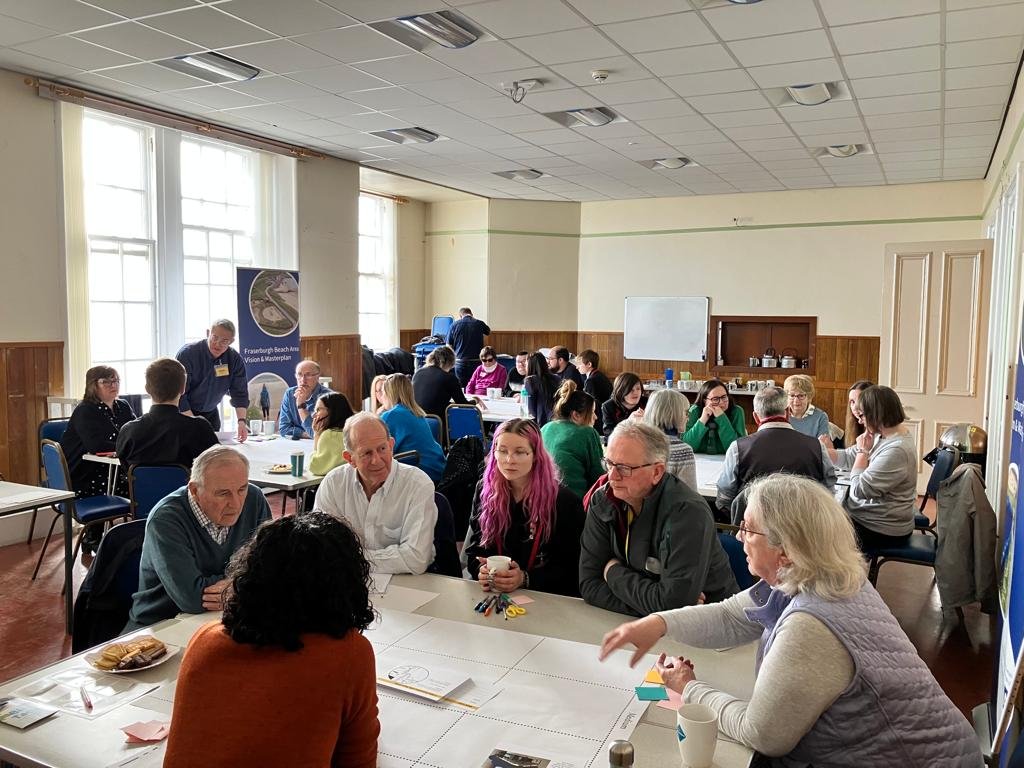
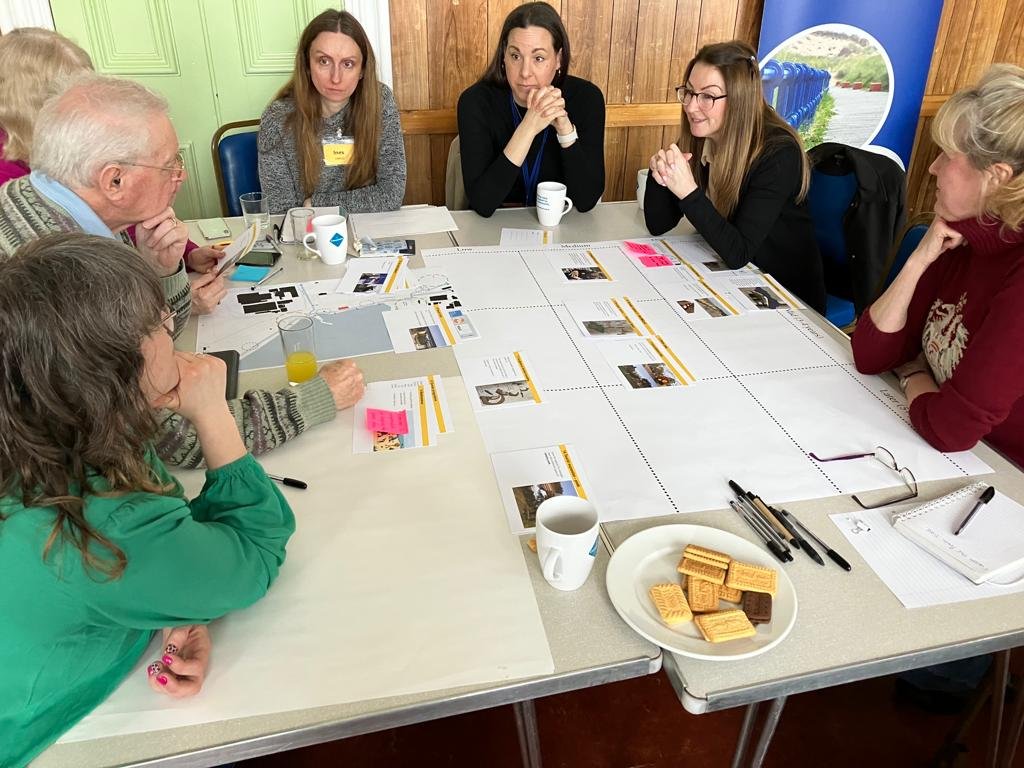
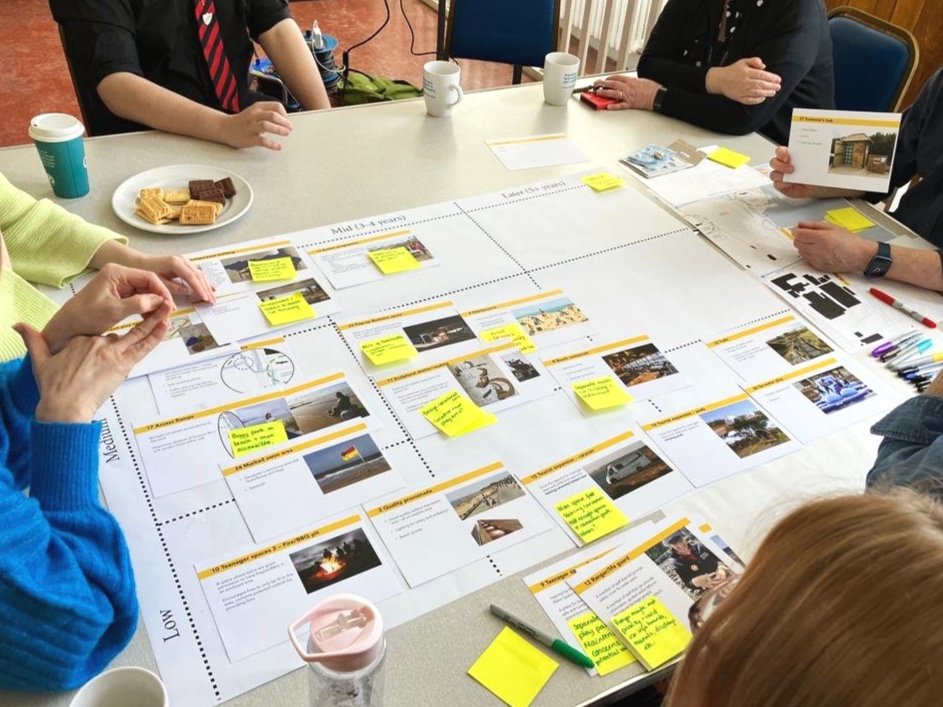

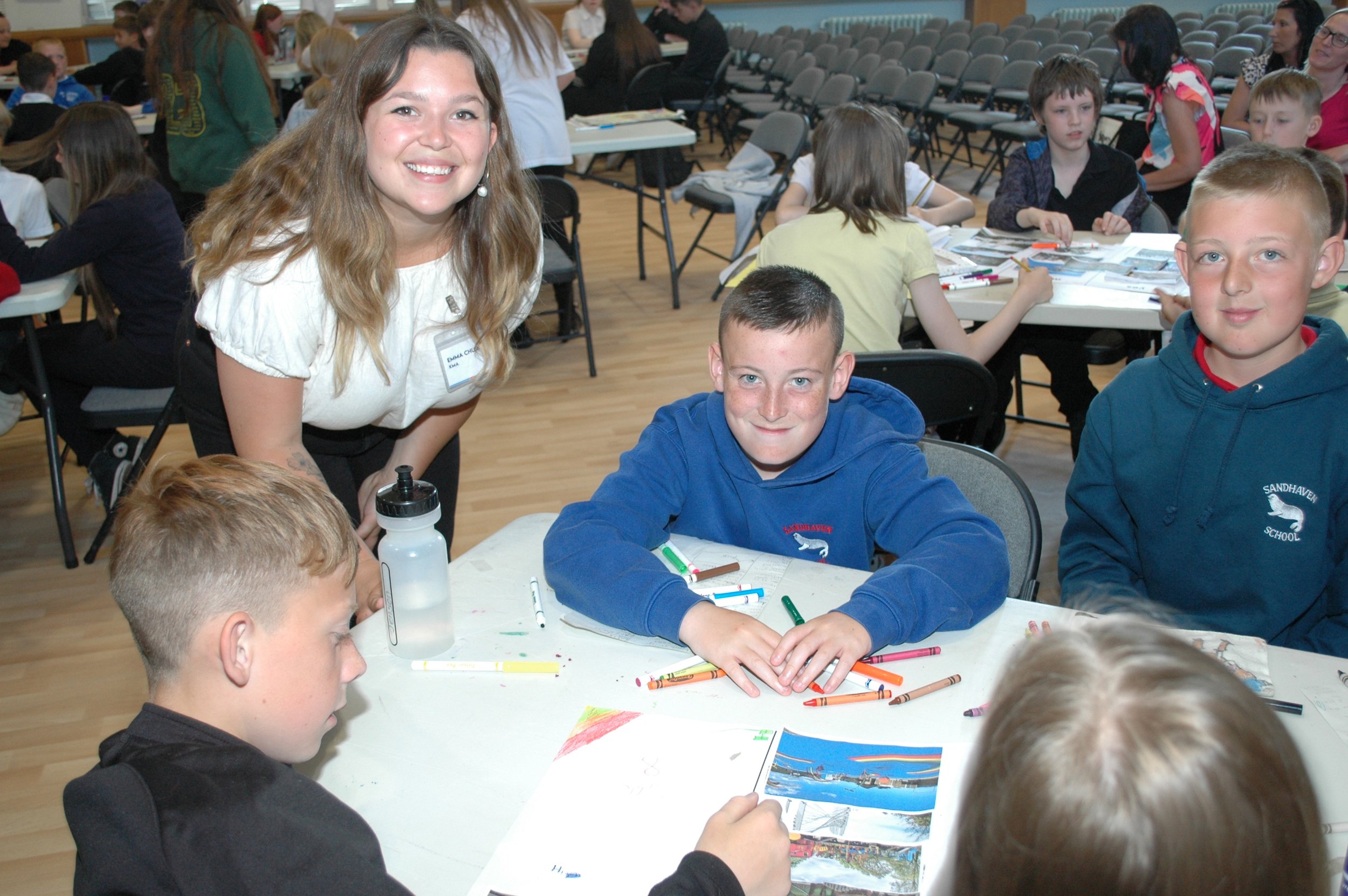
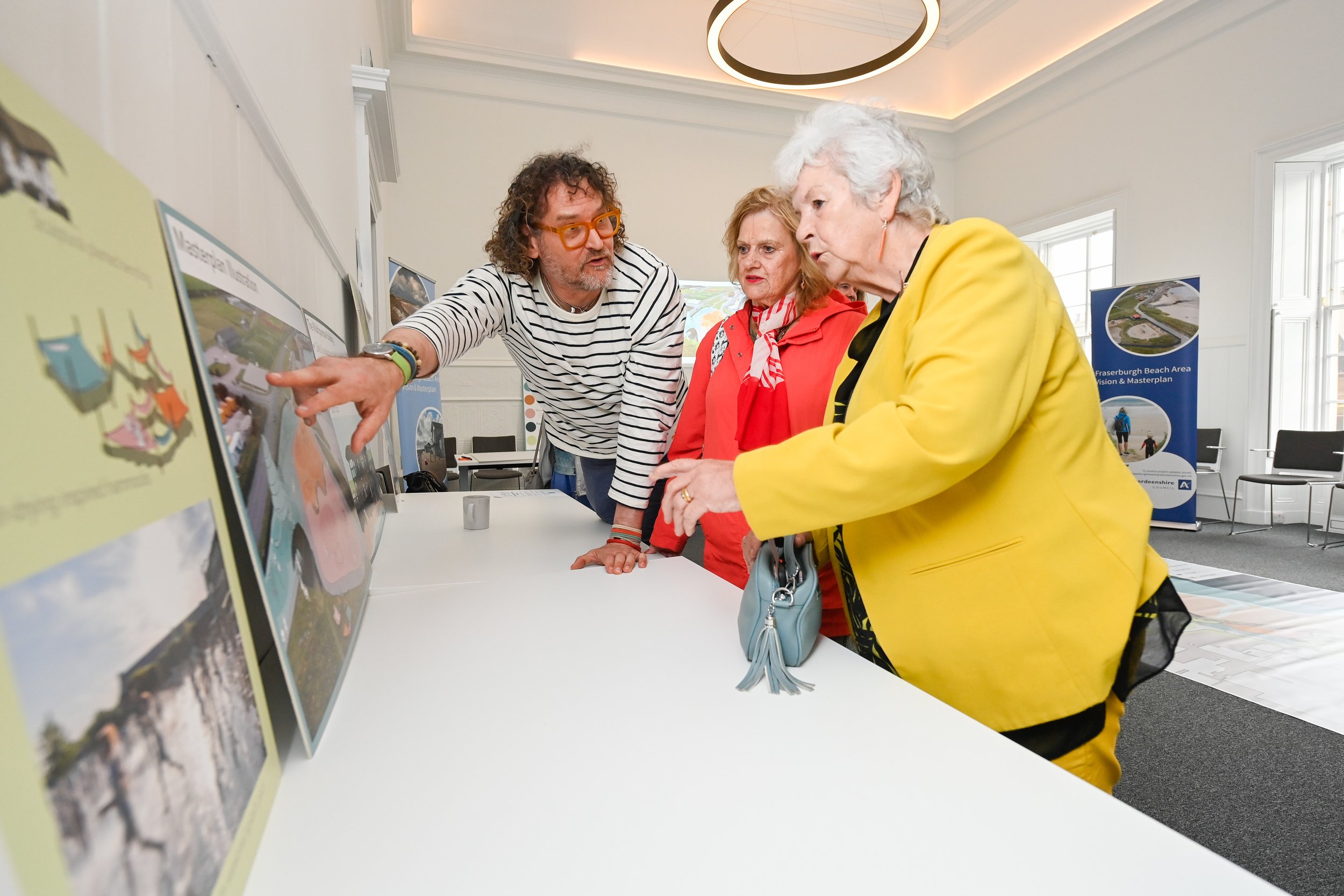

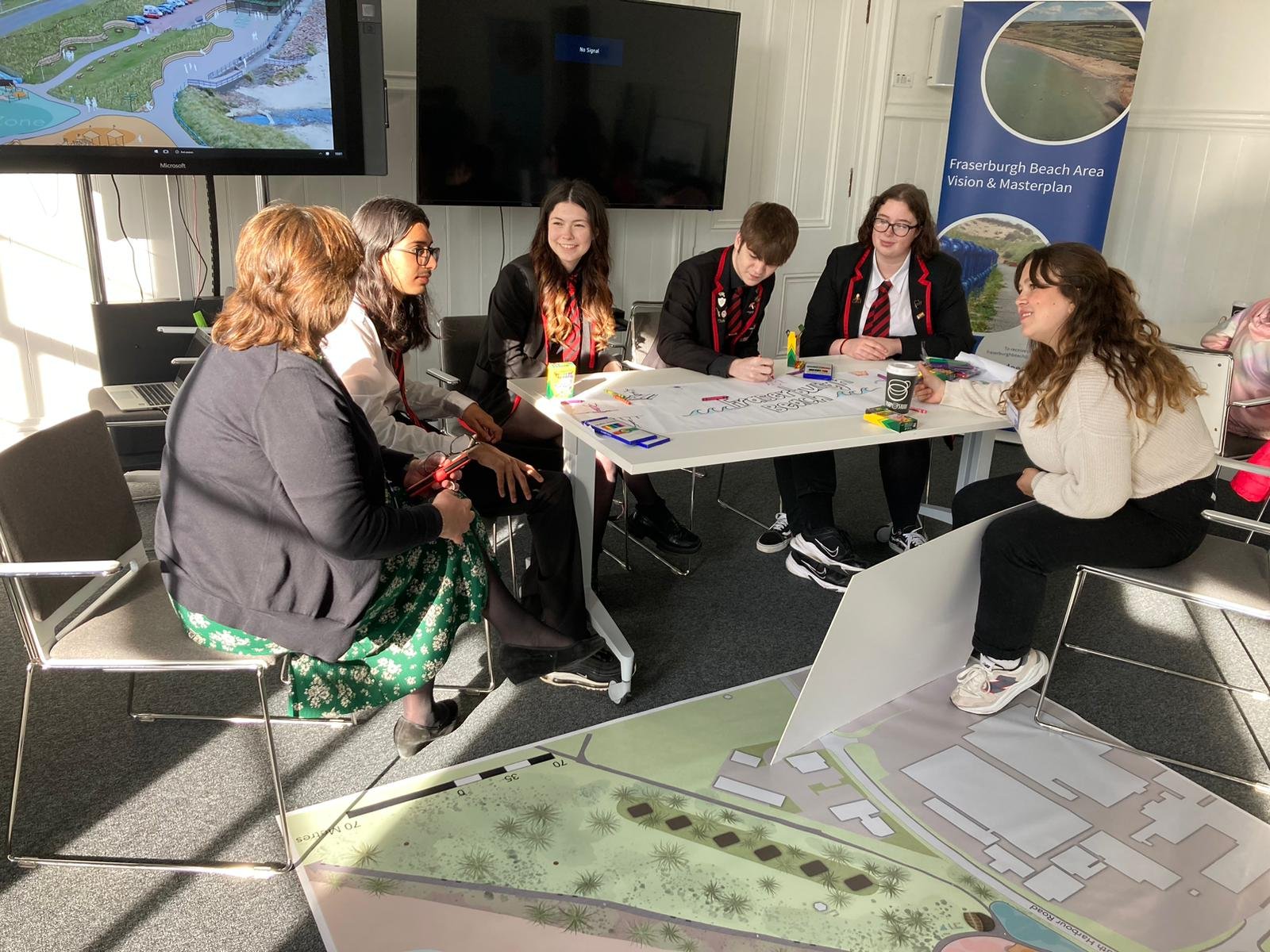
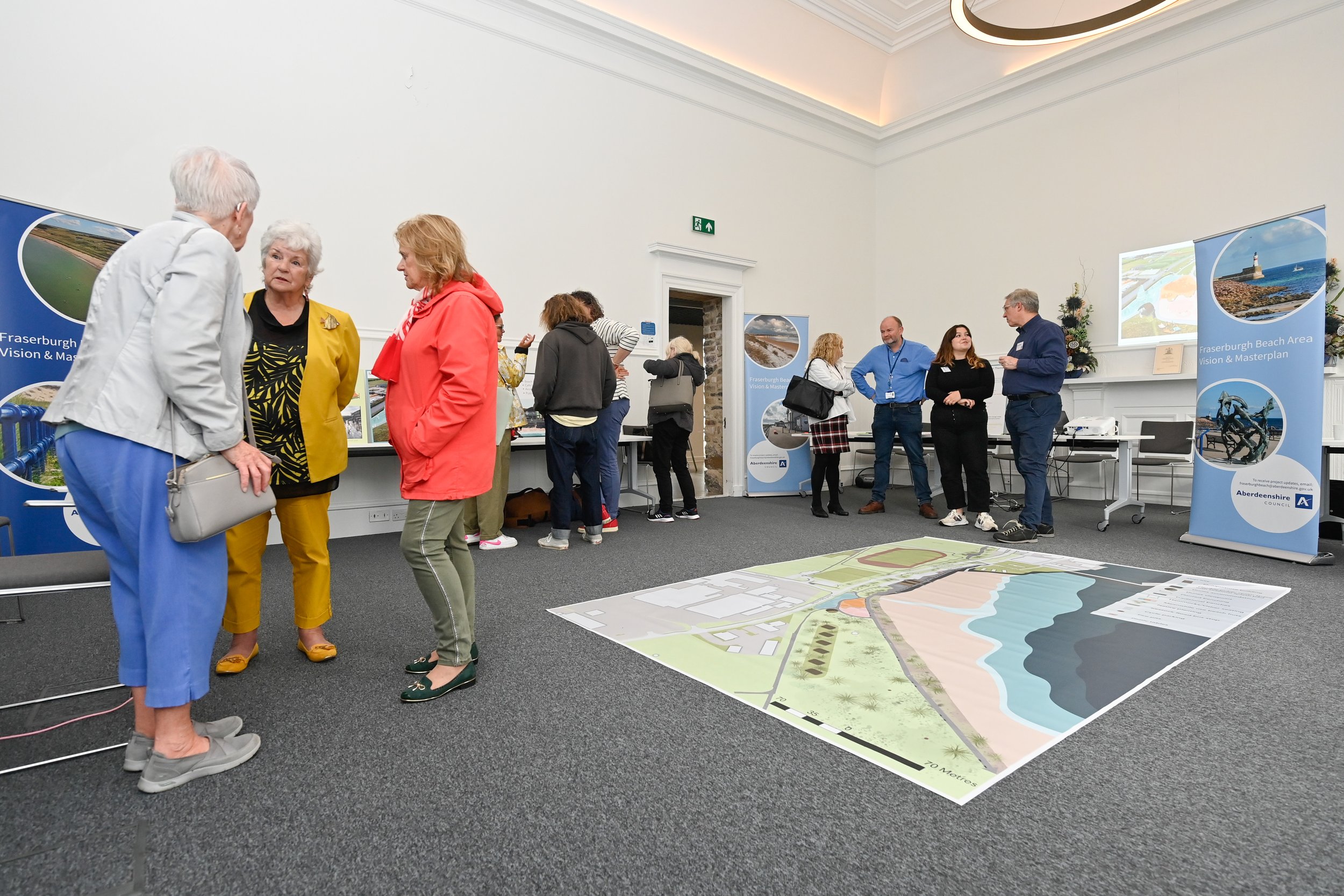
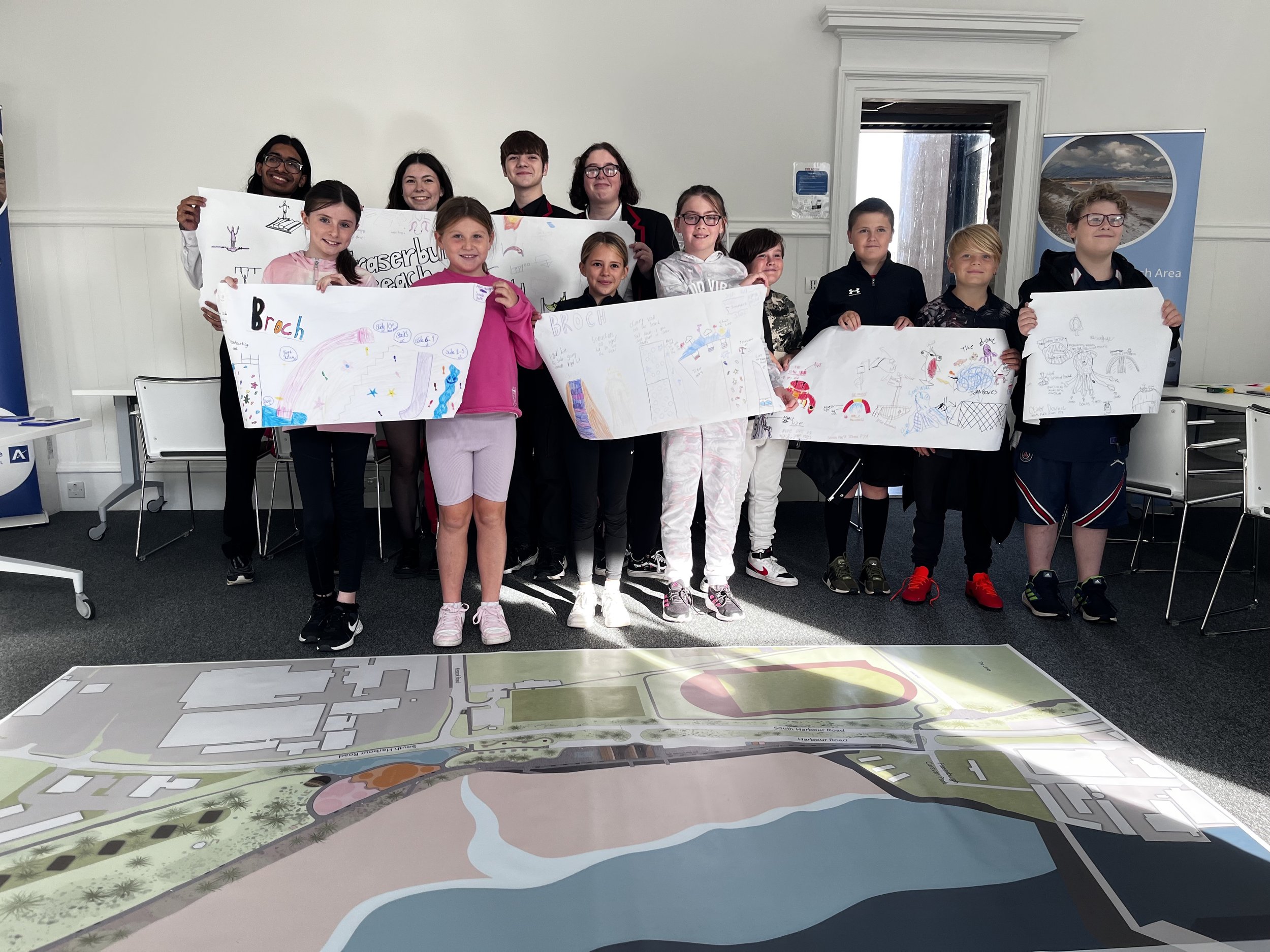
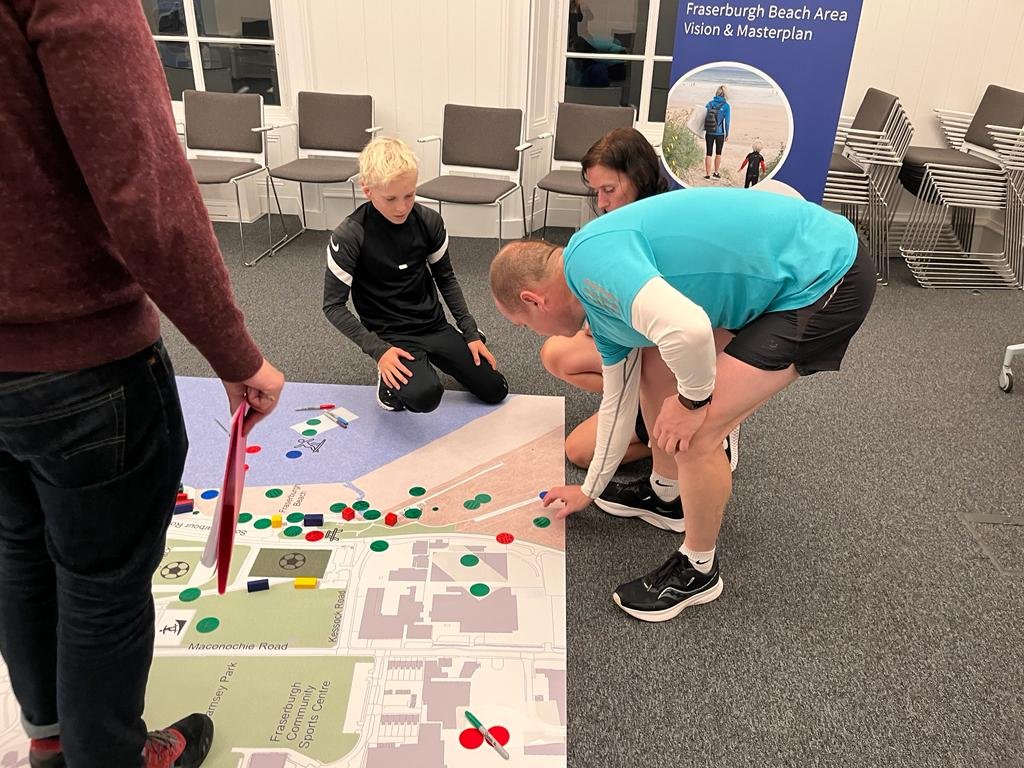
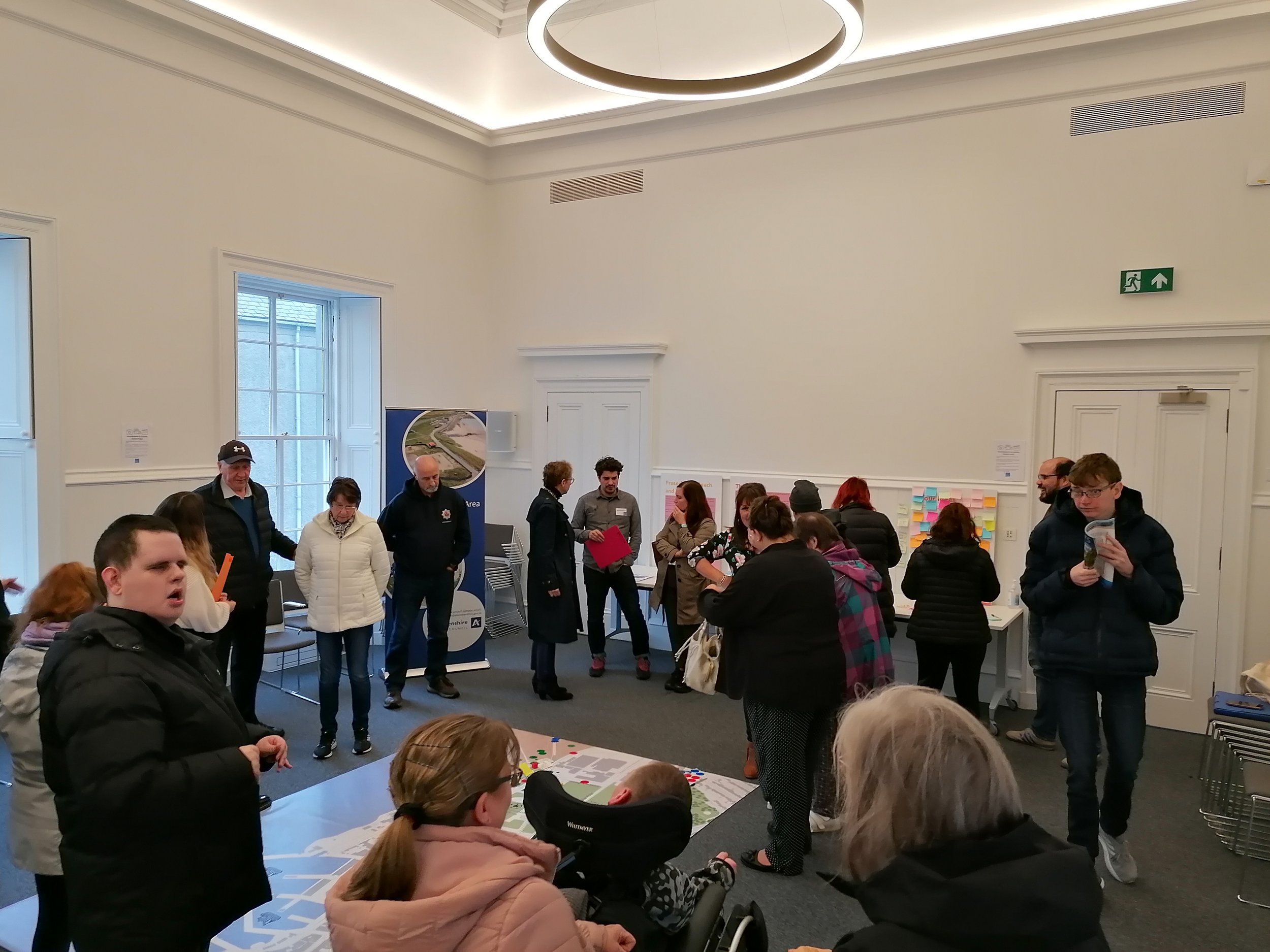
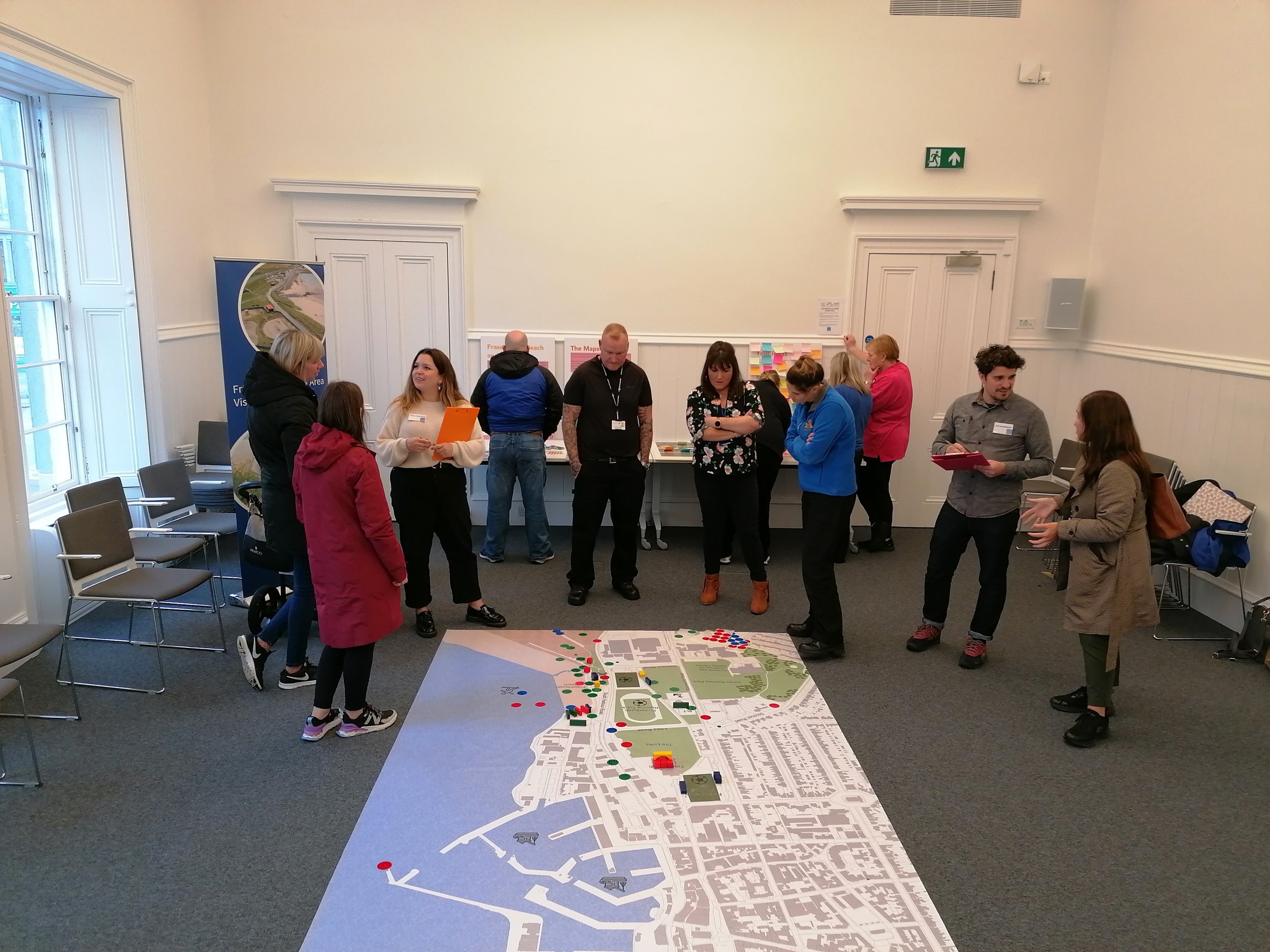
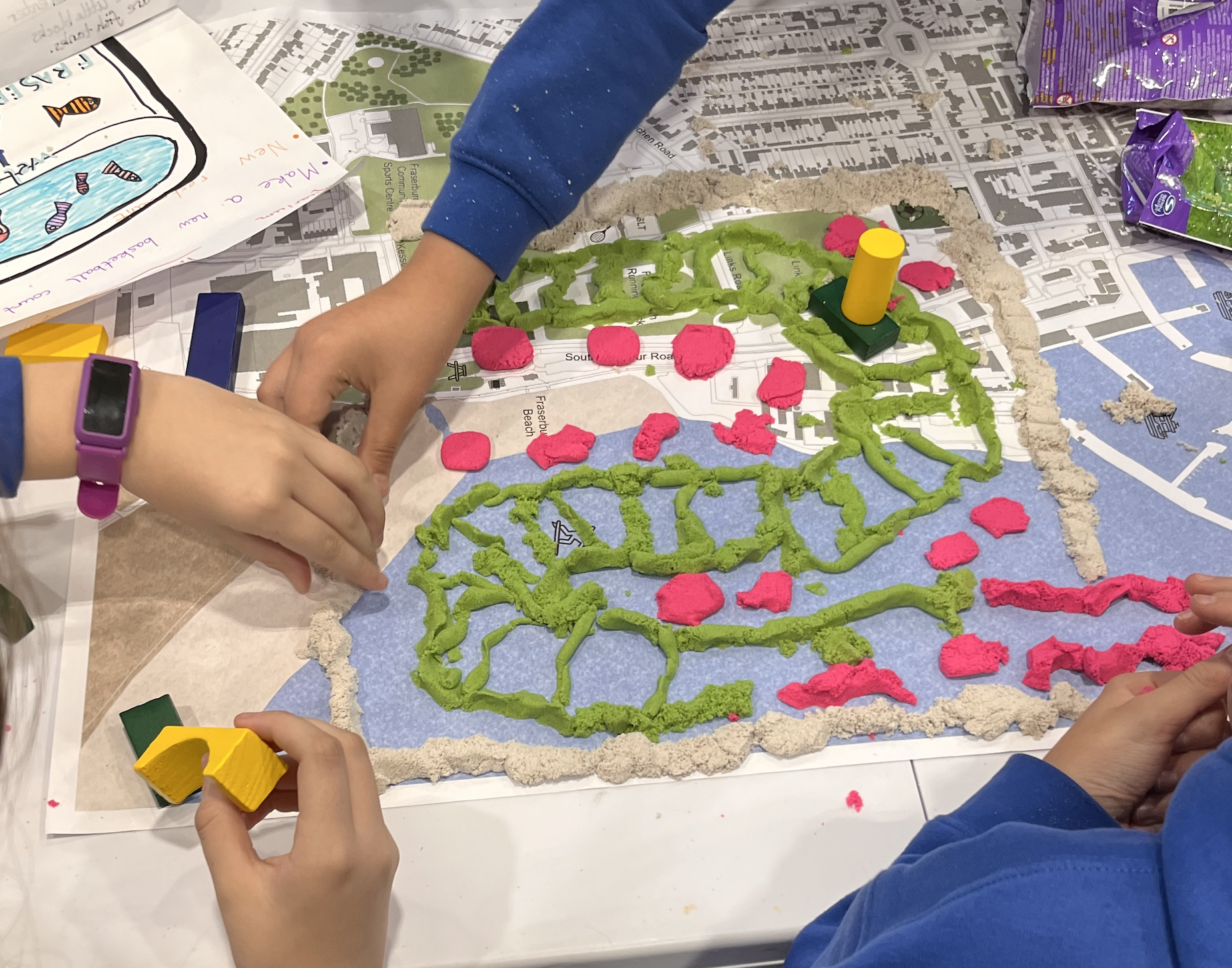
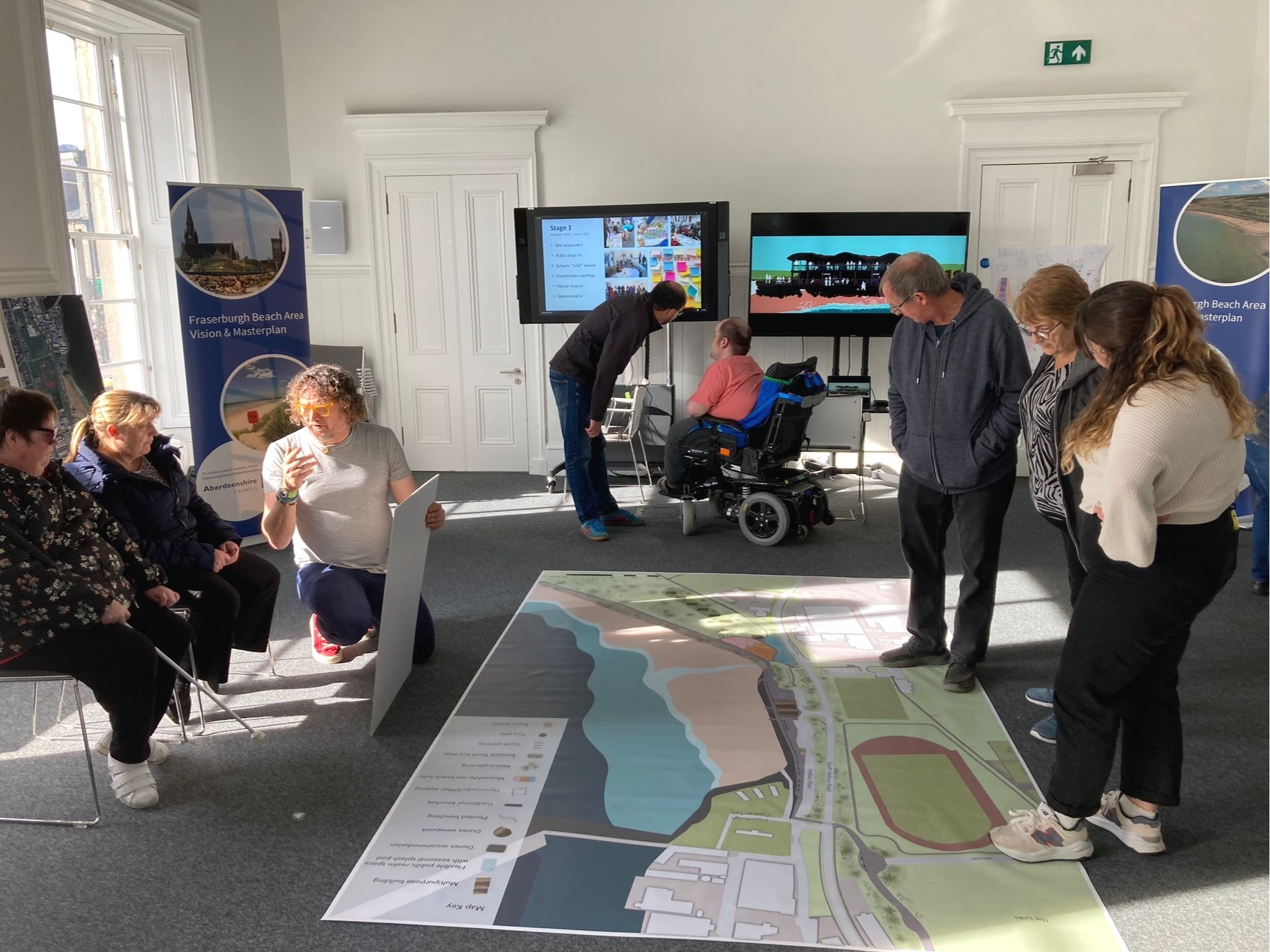
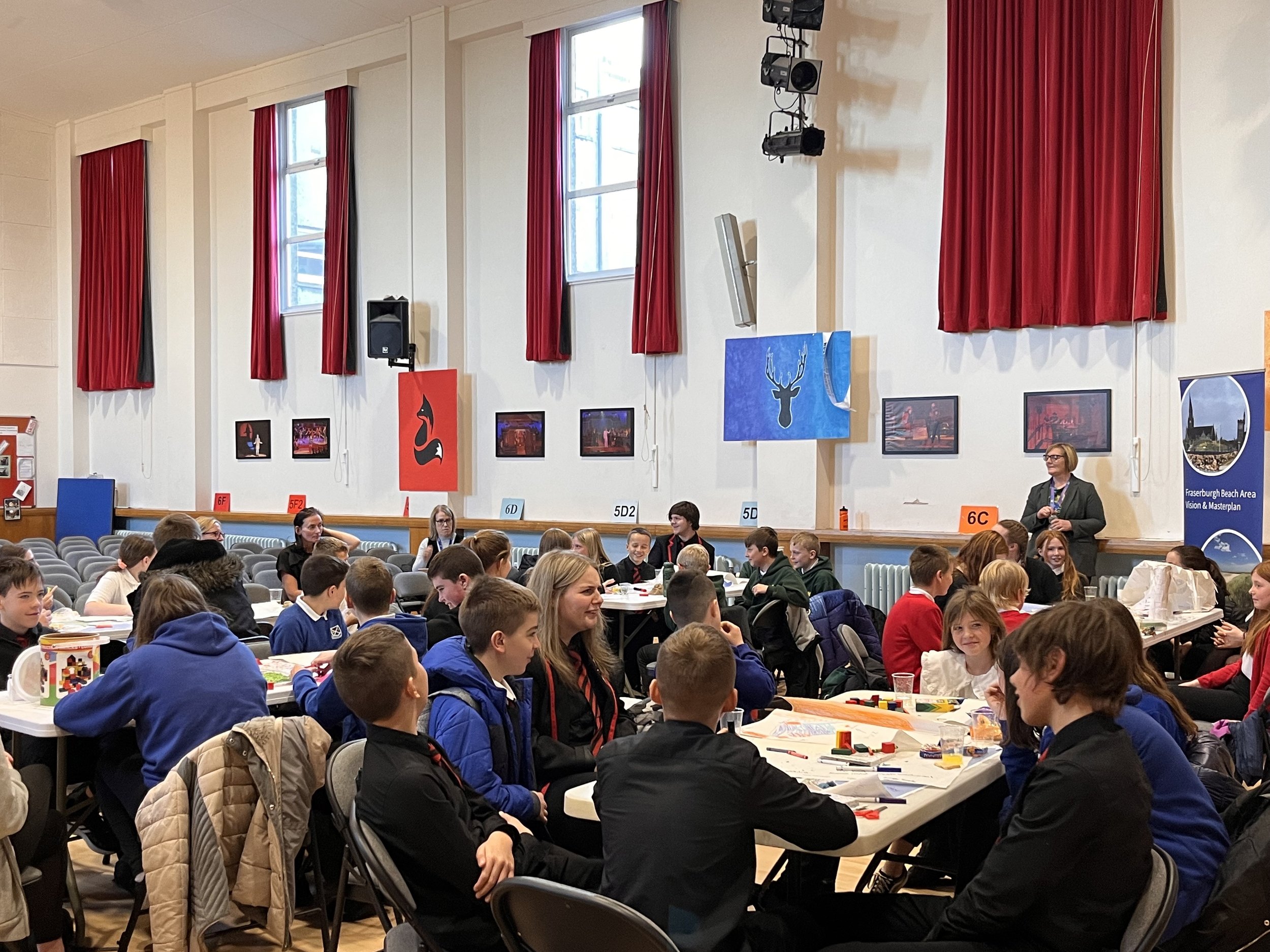
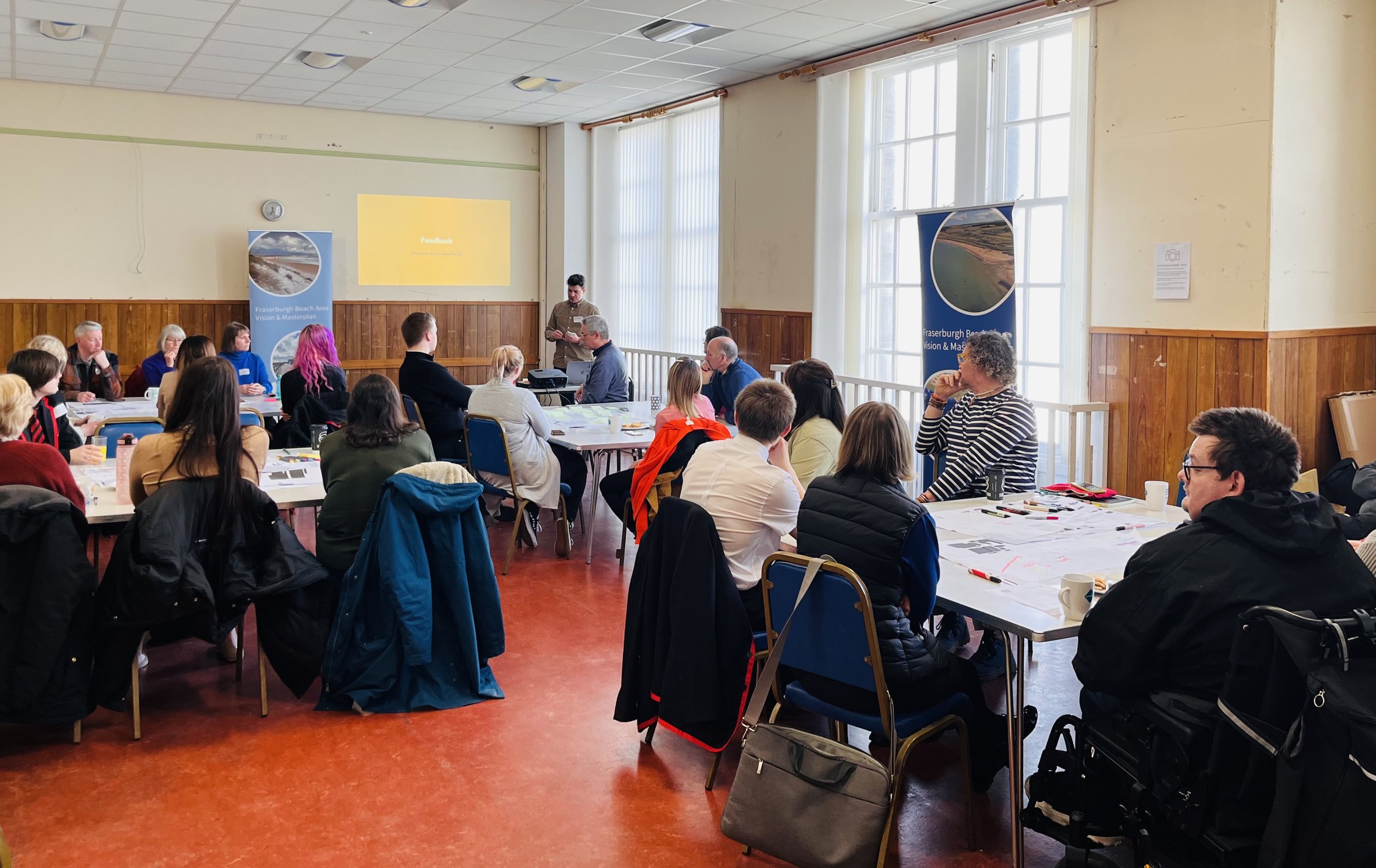

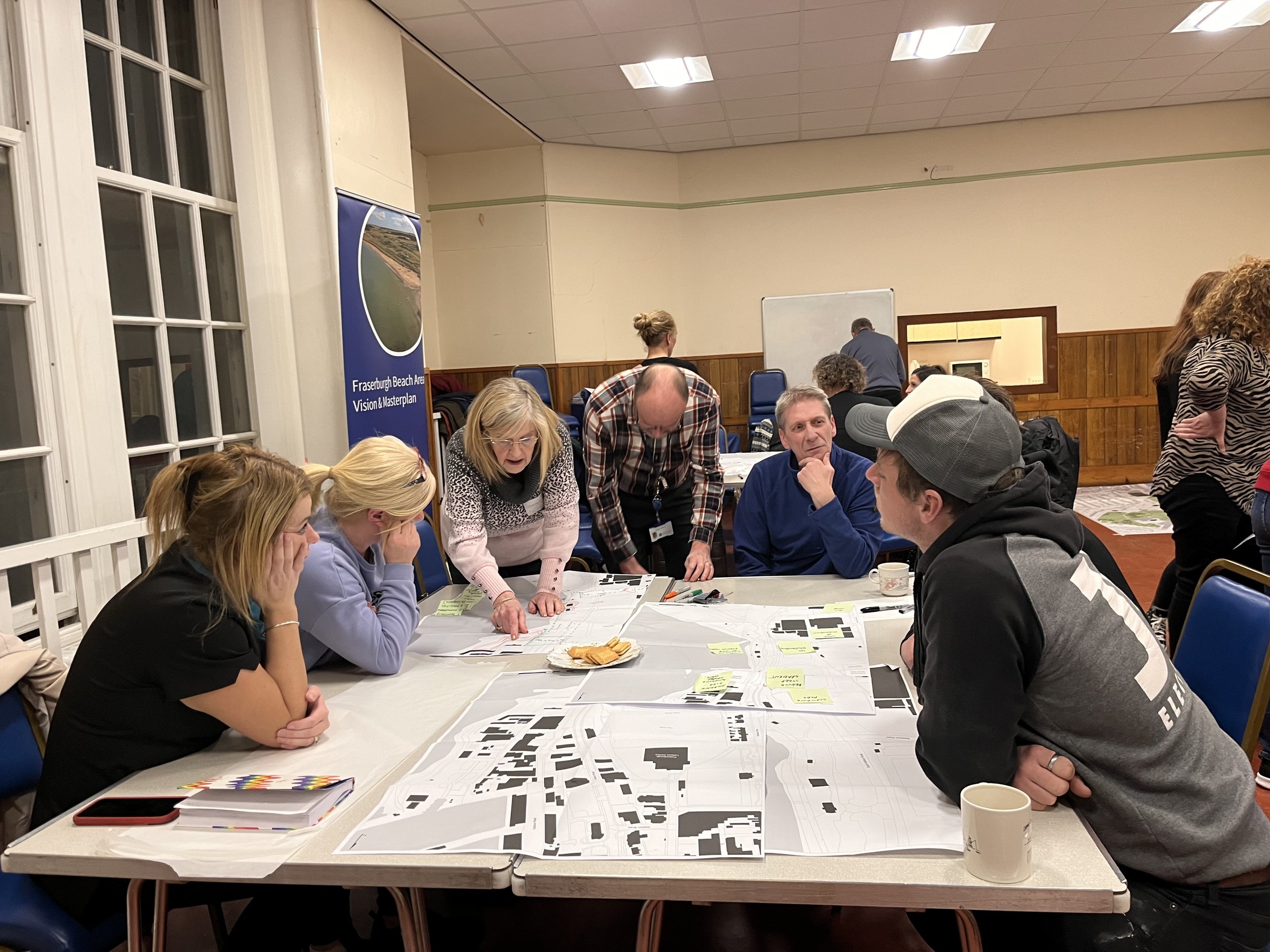
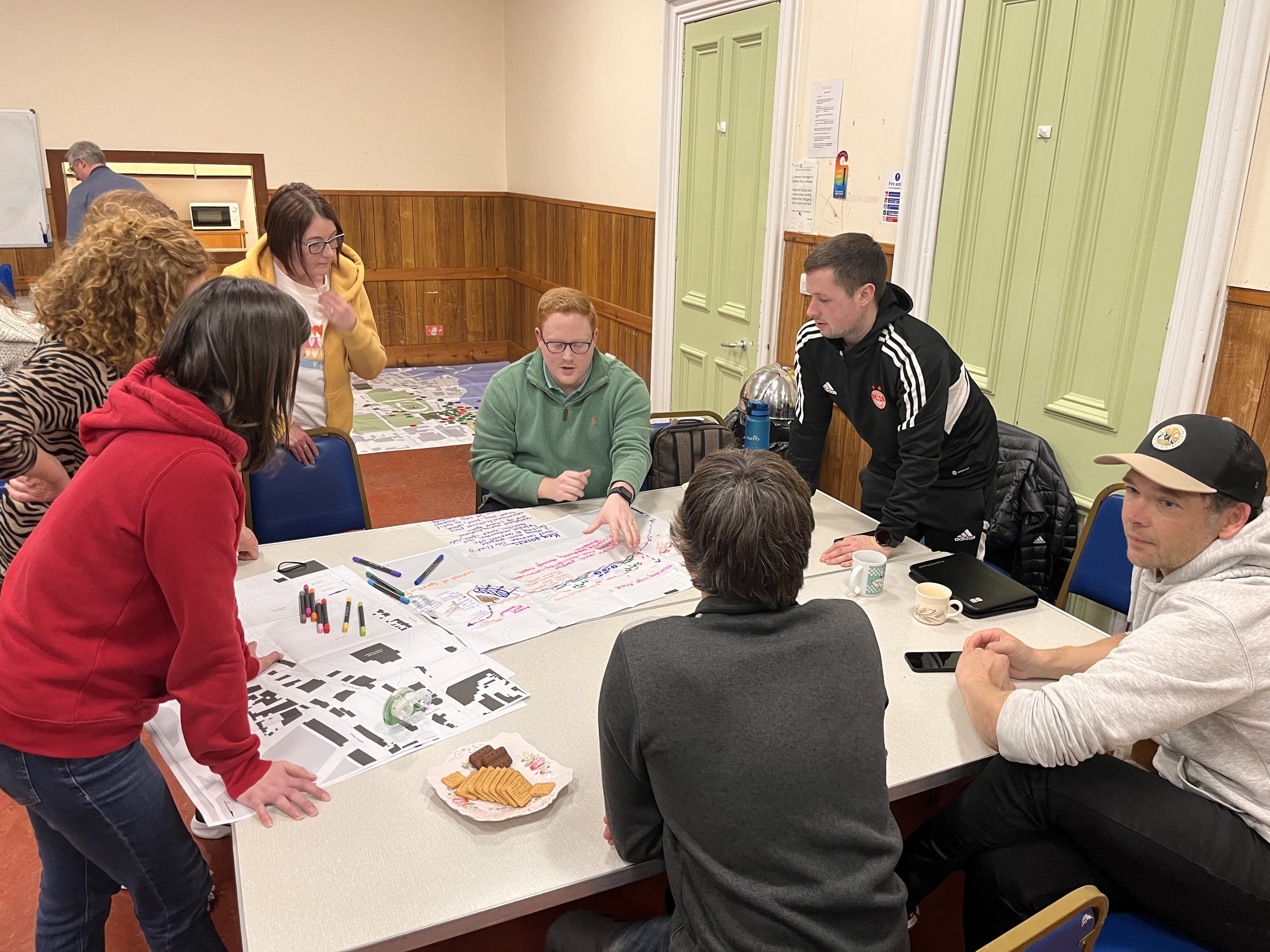
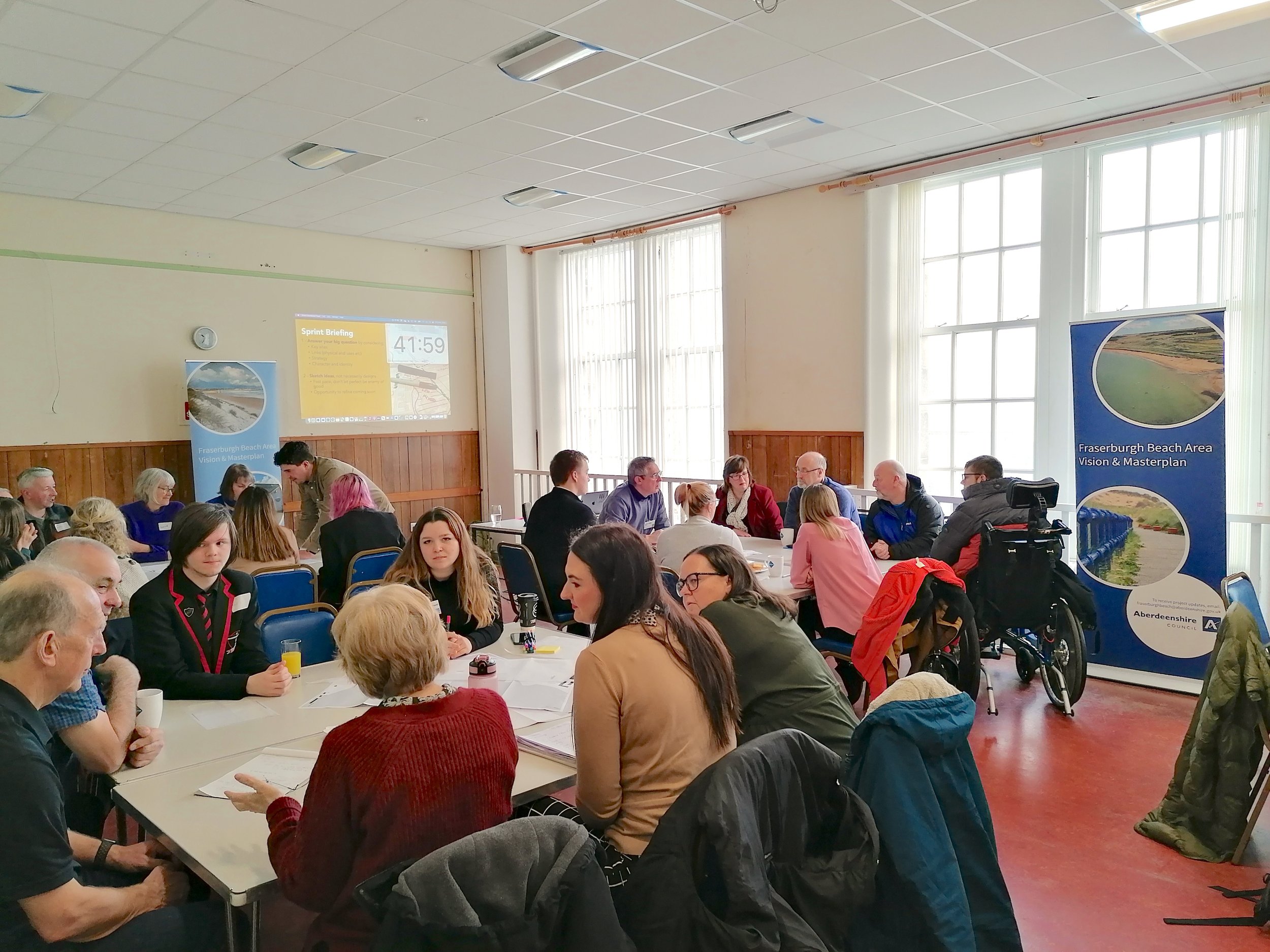
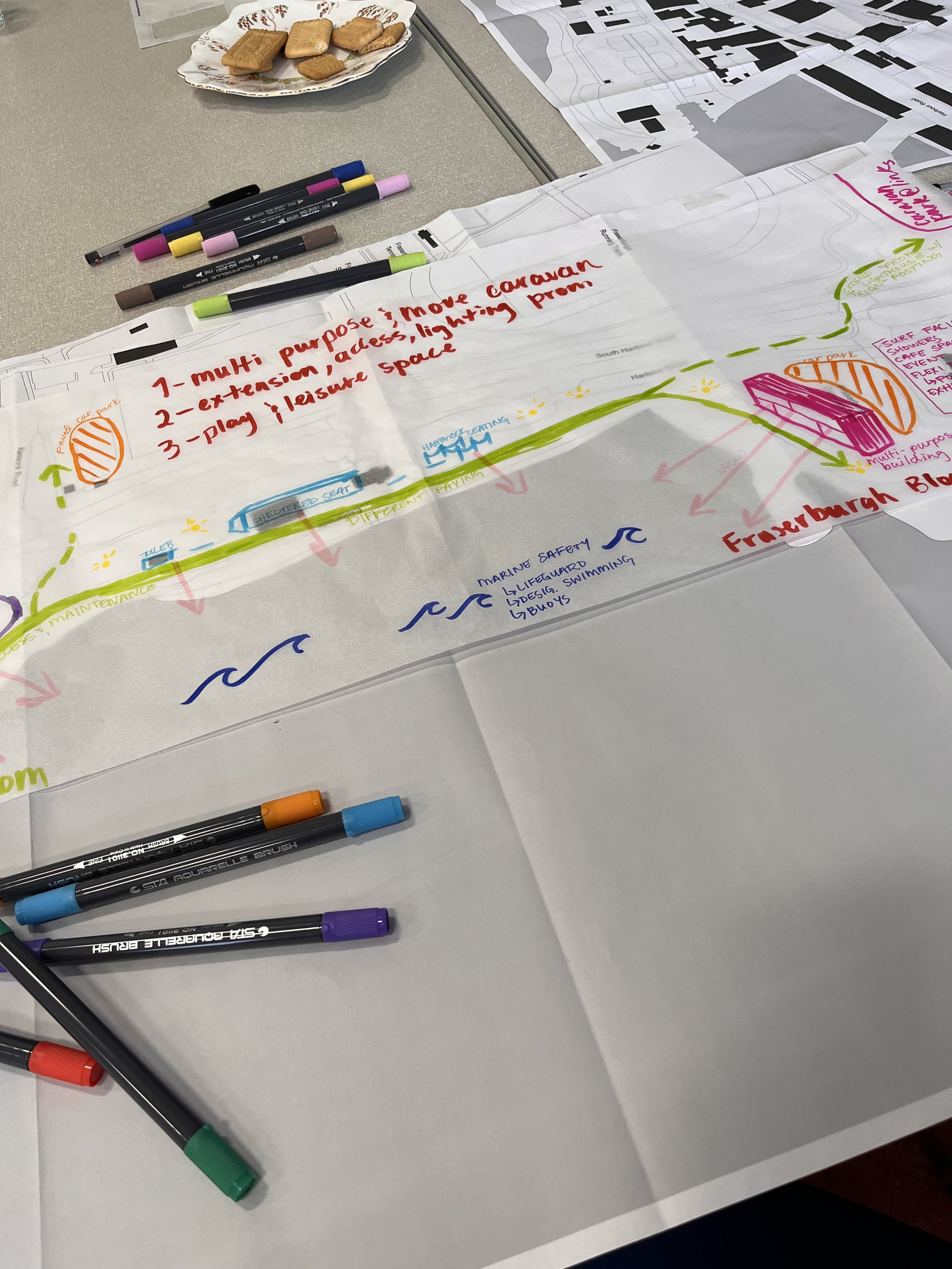
Collaboration with the wider public, including those who host visitors, enabled a dialogue around creative, place-based solutions, with stronger ties to heritage, art and culture. Local knowledge was invaluable in driving such place-specific design, creating a higher level of originality. For example, the seating designs were heavily influenced by the local harbour and seafaring history of the town, with hammocks inspired by nearby fishing net-drying posts, while sheltered seating inspired by waves, pays homage to the Broch’s surf culture. Creative seating was also a key outcome of engaging with children and young people, notably in facilitating places for them to hang out and socialise.
The 20 projects within this masterplan were largely determined through public co-design sessions in which participants collaborated to decide project hierarchy and priority. Some of the keynote projects within the masterplan include a new two-storey multipurpose building with outdoor covered promenade and seating areas; an expanded and improved play park; stronger walking and wheeling connections between the town centre and the beach area; and beach accessibility to increase inclusivity.
We at KMA look forward to seeing this project come to life in the coming years and cannot thank those who participated enough, as well as Alistair Rhind and colleagues at Aberdeenshire Council, and our colleagues Rob Thompson, Ines Triebel and Iain MacPherson. This project has certainly been a special one for us, serving to reinforce the value of co-design in the complex planning and development world, because of what it can do for places and for the people who have the motivation to help shape them.
